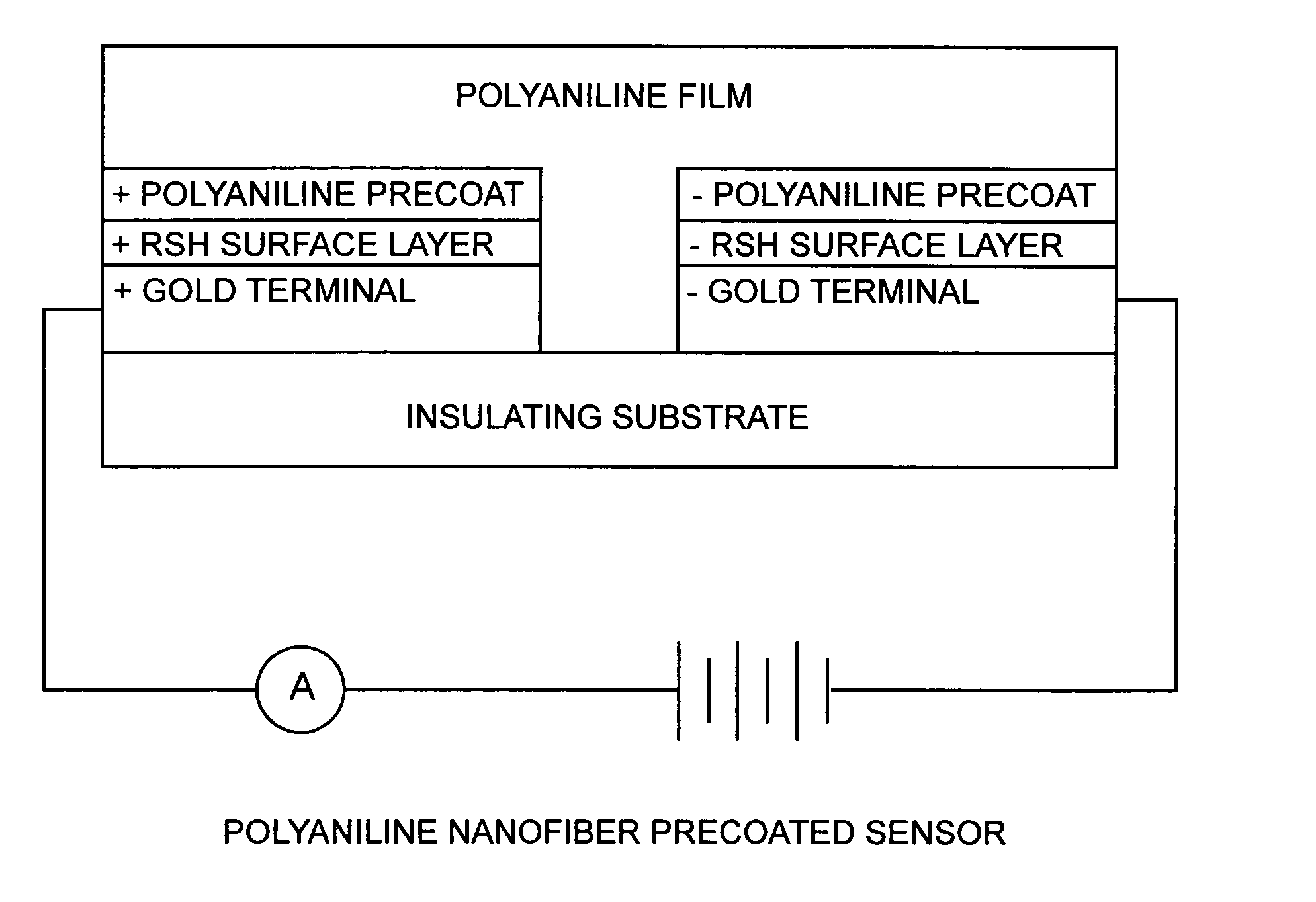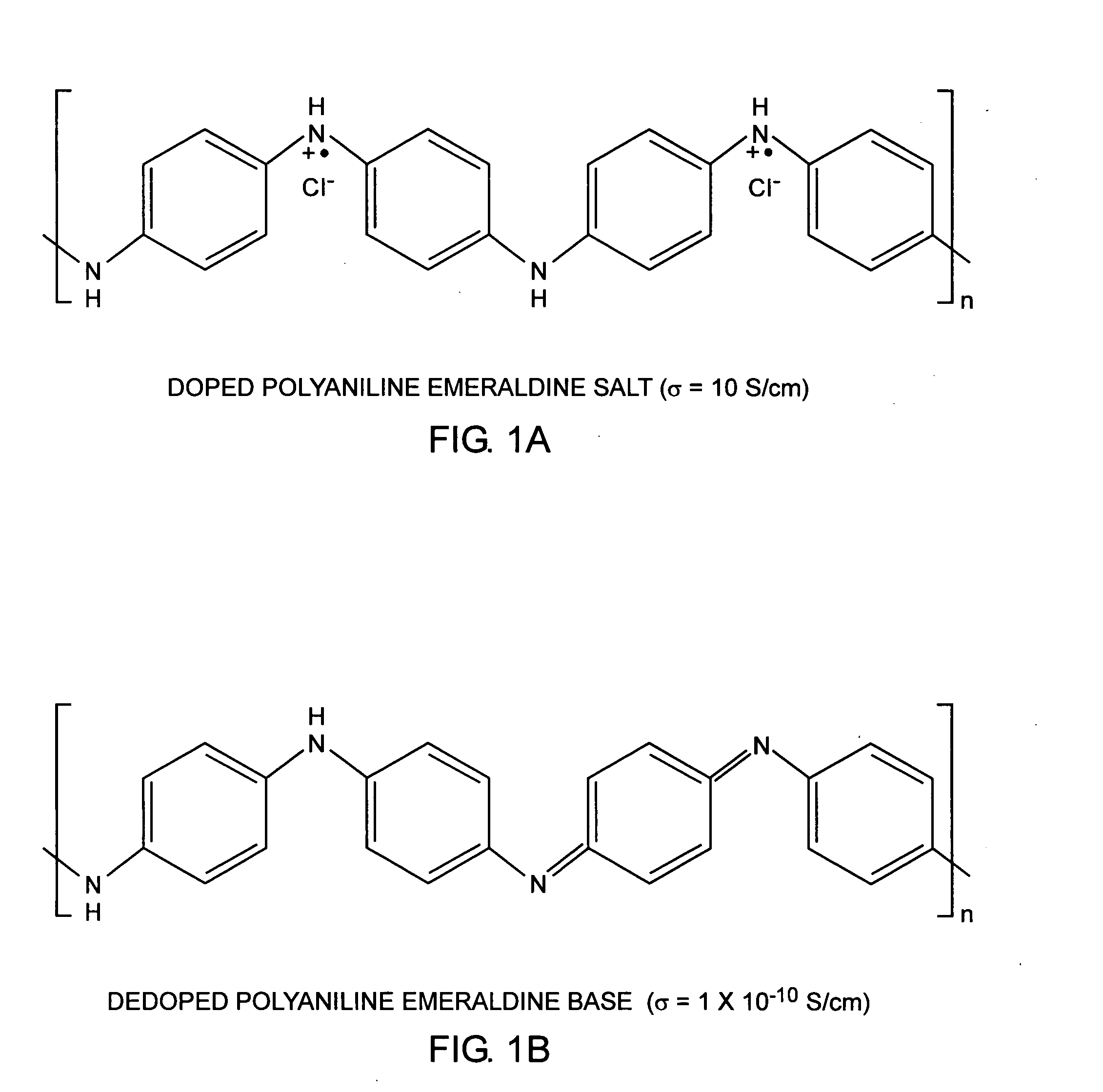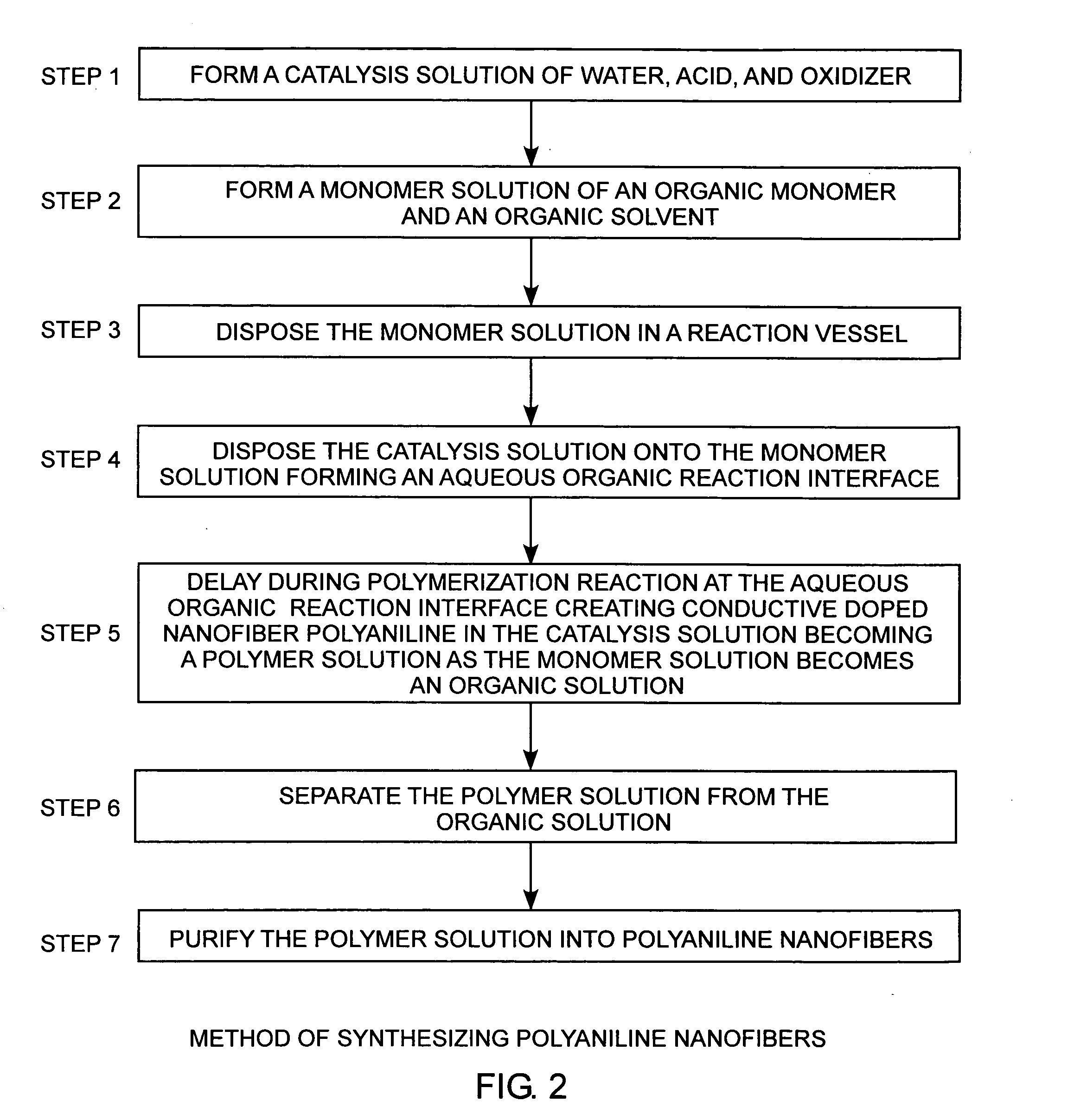Conducting polymer nanofiber sensors
a nanofiber and conducting polymer technology, applied in the field of nanostructured polymers, can solve the problems of degrading sensitivity, degrading diffusion, and inability to meet the needs of practical use of polymer electrode interfaces, and achieves faster chemical time response, higher effective surface area, and greater sensitivity
- Summary
- Abstract
- Description
- Claims
- Application Information
AI Technical Summary
Benefits of technology
Problems solved by technology
Method used
Image
Examples
Embodiment Construction
[0028] An embodiment of the invention is described with reference to the figures using reference designations as shown in the figures. Referring to FIGS. 1A and 1B, monomers, such as aniline monomers can be linked together to form polyaniline. The polyaniline can be doped with an acid, such as hydrochloric acid HCl dopant, as shown in FIG. 1A, and can be dedoped with a base, such as, ammonia NH3.
[0029] Referring to FIGS. 1A, 1B, and 2, and more particularly to FIG. 2, a seven-step method of synthesizing polyaniline nanofibers relies on a facile chemical process to produce high quality polyaniline nanofibers under ambient conditions using an aqueous-organic interfacial polymerization.
[0030] In step 1, a catalysis solution is first formed from water, an acid, and an oxidizer. The acid is preferably hydrochloric acid HCl, but other acids may be used, such as sulfuric acid H2SO4, nitric acid HNO3, perchloric acid HClO4, phosphoric acid H3PO4, acetic acid CH3COOH, formic acid HCOOH, ta...
PUM
 Login to View More
Login to View More Abstract
Description
Claims
Application Information
 Login to View More
Login to View More - R&D
- Intellectual Property
- Life Sciences
- Materials
- Tech Scout
- Unparalleled Data Quality
- Higher Quality Content
- 60% Fewer Hallucinations
Browse by: Latest US Patents, China's latest patents, Technical Efficacy Thesaurus, Application Domain, Technology Topic, Popular Technical Reports.
© 2025 PatSnap. All rights reserved.Legal|Privacy policy|Modern Slavery Act Transparency Statement|Sitemap|About US| Contact US: help@patsnap.com



